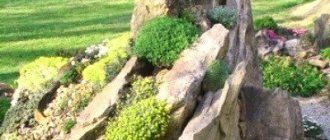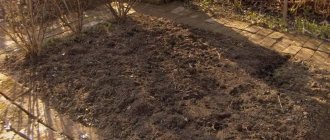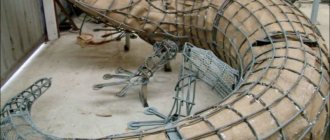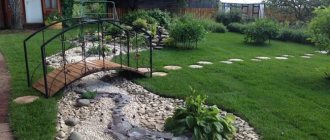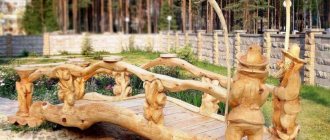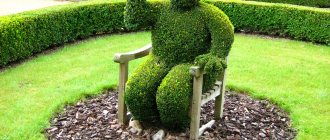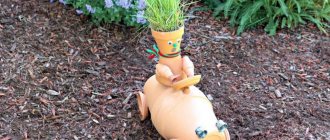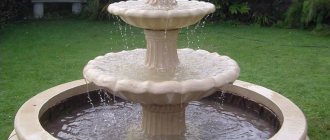You can decorate the garden with any sculpture you like. Classical and modern, realistic and abstract, religious, national, family, personal. The main thing is to harmoniously fit it into the natural environment and present it in such a way that it brings pleasure not only in itself, but also enhances the overall impression of the plant composition and the garden. We tell you how to correctly select and place a sculpture on your site.
The tradition of decorating gardens and parks with sculptures came to us from Ancient Rome
Follow us:
Landscape sculpture: general information
First, you need to define this art direction, and also talk about some of its characteristic features. So, such a sculpture is one of the types of plastic art. It is created to decorate various garden and park areas. Such objects can be of any size. I wonder what other purposes such objects of art are created for? In addition to the main, decorative component, garden sculpture can perform propaganda or educational functions. Some objects are created to perpetuate the memory of famous people or important events.
This type of art has long been recognized as traditional. It is most evident in Western European culture, where many excellent examples can be found. We'll talk about them a little later. Now let's turn to the history of this direction.
What is garden sculpture, and what types of it exist?
Landscape design professionals divide garden sculpture into the following subtypes:
1. Small plastic.
Small-sized products made of wood or plastic that do not play a major role in the composition. Used only as secondary elements.
2. Sculptural additions.
Products that have not so much a decorative function as a practical one.
plaster sculpture
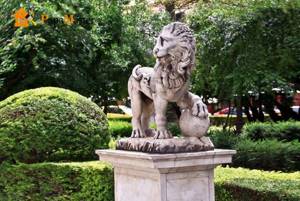
lion made of plaster
3. Abstract compositions (or art sculptures).
Products made in a modern manner and the same materials. Often presented in the form of an unusually shaped structure made of metal, plastic and other things.
4. Classical (or neoclassical) sculptures.
Products made according to our usual standards from noble materials (for example, bronze or marble).
Materials from which garden sculptures can be made:
1. Tree.
Easy to work material. With proper treatment and care it can last for several years. How to make an original swing chair yourself, read our next article.
2. Plaster.
By filling out a variety of shapes, you can make almost any shape. The biggest drawback is the fragility of the finished product.

wooden deer
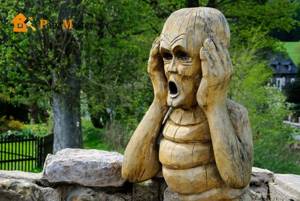
example made of wood
3. Concrete.
The service life is longer than that of wood or plaster, but still short. Due to sudden and strong temperature changes, it begins to crumble. Products made from it have quite an impressive weight.
4. Stone (marble, limestone, granite, quartz, sandstone and many others).
Expensive and at the same time very noble materials. They fit perfectly into almost any garden style.
5. Metal.
With proper care, a product made from it can last for many years. The disadvantages include the fact that it is not appropriate in every style.

metal sculpture
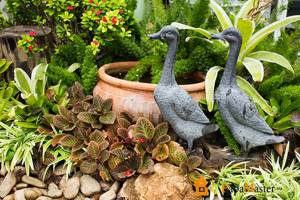
geese
6. Plants.
An interesting idea is to trim trees or bushes, as well as create a living “carpet” on the surface of the frame. It looks quite interesting, but is very difficult to care for and requires constant haircuts so that its shape does not lose its outline.
7. Ceramics.
Products available in price. Quite durable and unpretentious.
Don’t miss our article on how to make a decorative windmill for your garden yourself as an element of landscape design.
The Birth of Garden Sculpture
First, it's worth talking about when and where this art form first began to appear. So, according to many experts, decorative (landscape) sculpture originated in Ancient Greece. Then the very first known gardens appeared (in Athens and other places). It was at this time that the tradition of decorating them with various sculptural objects arose. One of the famous places of that time was the gardens of the Academy, where philosophers gathered.
When this period was replaced by the Hellenistic era, garden and park sculpture received slightly different tasks. From that moment on, it had more decorative and entertainment functions. Famous examples of that time are “The Old Fisherman”, “The Satyr’s Rest” and many others.
In Ancient Rome, such sculpture was further developed. At that time, active conquests were constantly underway. Therefore, many Roman gardens were decorated with statues from different materials exported from other countries - bronze, marble, plaster and some others. Also in Ancient Rome there was such a trend as copying art objects of Ancient Greece.
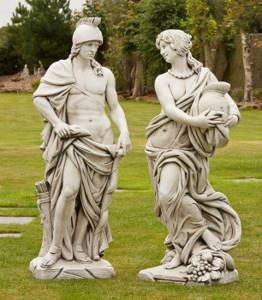
Further stages of development
So, we learned about how garden sculpture was born. Now it’s worth continuing our excursion into history. It is interesting that during the Renaissance in some countries, for example in Italy, sculpture developed much more actively than other areas of art. The figures were installed in many places: in huge squares and in small gardens. They were also used to decorate objects such as fountains.
It was from Italy that this art direction was borrowed by other countries. Gradually, France, England and the Czech Republic adopted such traditions of decorating gardens and parks.
Sculpture in a modern interior
Do you want to give your home a finished look, highlight your individuality and taste? This is easy to do: you just need to order a sculpture that matches your home. However, when choosing a sculpture, you need to take into account some subtleties, so that your home does not become like a warehouse of museum exhibits or a shop cluttered with an abundance of small figurines, you need to take into account some subtleties in choosing a sculpture.

First of all, we must take into account the fact that the role of sculpture in the interior is purely decorative and there is no need to try to combine utilitarian benefits with aesthetic value. When choosing a sculpture, you need to take into account the style of the apartment, pay attention to the interests and hobbies of the person for whom it is intended (especially important in cases where you are going to give a sculpture), take into account the layout of the home and the availability of free space in it, and also do not forget to what type of housing is the statue intended for: a city apartment, a country house, or even for an office in some institution.
So, for an apartment in a classic style, you can buy marble statues or plaster busts made in an antique style. But don’t forget to decide on the size of the statue: large statues, up to 1 meter high, are suitable for a spacious living room with plenty of free space, but if the room is cramped, then it is better to pay attention to medium-sized options. Miniature statues are perfect for a bedroom, and statues that can be placed on a table or shelf would be the ideal solution for an office.

For a large country mansion with a separate yard, statues for the garden will look very impressive. Here you can give full play to your imagination: garden statues made of bronze or marble, sculptures made of stone or concrete and even the most unexpected materials will come in handy. Statues can depict historical scenes, flora and fauna (lion statues are especially popular in this category), human figures or faces. If you want to emphasize the luxury of your yard, then you can easily order a copy of the famous sculptures of Antiquity or the Renaissance. In the case of sculpture, unlike painting, decorating the interior with copies is not considered bad form or lack of good taste and is completely permissible.

A home in the ethnic style that is popular today will be perfectly complemented by bronze statues of Buddha or other oriental deities, figurines of elephants, turtles, and various artifacts belonging to one or another exotic culture.
The boho style in the interior is very popular among creative people who are free-spirited and do not recognize stereotypes. If you are a lover of bohemian negligence, eclecticism and love to combine incongruous things, then you can easily buy a statue in the oriental style at a thematic exhibition and sale and order a bust of your favorite historical character from a famous master.
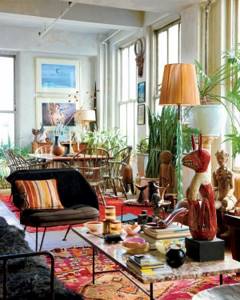
For a stylish and laconic interior in the spirit of minimalism, you can order a statue made of bronze or other metal, glass, ceramics or wood. The peculiarity of sculpture in the style of minimalism is the smoothness of lines and laconic completeness of forms. This stylistic direction does not accept a large number of details, so it is enough to get by with one or two statues. Fans of modern interiors can also choose original futuristic statues or abstract statues.

Be sure to remember that you need to choose a statue taking into account other decorative items: dishes and vases, lamps, curtains and furniture. To present the sculpture in the most advantageous light, also provide it with a place with an interesting play of light and shadow.
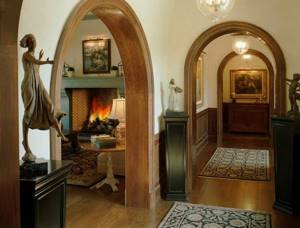
In landscape design, you should select the location, shape and style of the statue even more carefully. You can also create an ensemble and buy garden sculptures made in one direction.
By purchasing a sculpture for your interior, you can emphasize your taste and individuality and join in with a piece of beauty - after all, you will have a real piece of art in your home.
Gardens
Many garden and park ensembles are recognized as real pearls, are valuable monuments of cultural heritage and are under special protection and protection.
The Baroque gardens deserve special attention. Their distinctive feature is precisely the presence of a large number of park sculptures. Vases were also used to decorate green areas. Wonderful examples of that time are the Summer Garden, Versailles and many others.
After some time, landscape gardens of classicism appeared. Significantly fewer sculptural objects were used to decorate such parks. At this time, figures of the gods of Ancient Greece and Rome began to be created again, many characters were also borrowed from these cultures. An excellent example of classicism gardens is the Alabino estate, located in the Moscow region.
In the 19th century, the arrangement of garden and park ensembles changed noticeably. At the beginning of the century, classicism mainly reigned, but it was gradually replaced by academicism, and somewhat later by other directions. For example, at that time a monument appeared in the Summer Garden, completely unlike the others. It was dedicated to Krylov, the author of famous fables. It is interesting that the sculpture was completely different from the previously created examples of Baroque and Classicism.
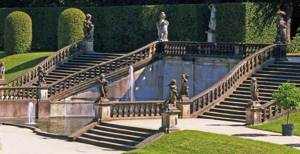
Famous examples of garden sculptures
There are many examples of this art direction. One of them, which was already mentioned above, is the Summer Garden. It is located in St. Petersburg. Famous statues such as “Mercy”, “Justice”, “Woman with a Diadem” and many others are installed here.
Another famous ensemble is the Tuileries in Paris, where many famous cultural monuments are also located.
Interestingly, plaster sculptures were popular at one time. One of them decorated Gorky Park in Moscow during the Soviet period. It was called “Girl with an Oar.”
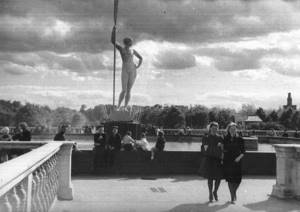
Its original version was created in 1934. It was damaged during the war, but after that it was restored. “Girl with an Oar” is a fairly famous object. Now it is also located in Gorky Park.
Landscape art: gallery of unusual sculptures
Unusual garden sculptures can change your usual space and turn your yard into an art gallery. Made from glass, bronze, wood, rods, stone, metal - they can truly surprise you. A little imagination - and you will find yourself surrounded by the incredible emotions that these creations give.
We have collected a selection of photos of interesting sculptures that are located in parks in different cities of our planet. The artists who created these masterpieces each tried to express their own feelings and experiences in their own way. And as a result, garden figures lure visitors from all over the world here to amaze with their uniqueness.
The moving force of the vortex is reflected in a water sculpture in the form of a whirlpool, made of glass. Don't you think it also has sound? This figure can be placed both in the garden and directly in the house. And it will shock and fascinate not only you, but also your guests.
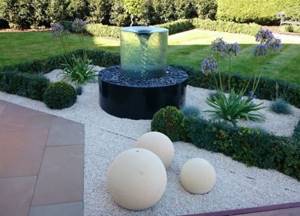
The Weeping Giant is a sculpture in one of the parks of The Hague.
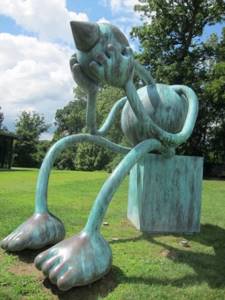
Sculpture by Stuart Chalmers "Through the Looking-Glass Alice Enters the Garden of Guildford Castle" (Guildford, UK)
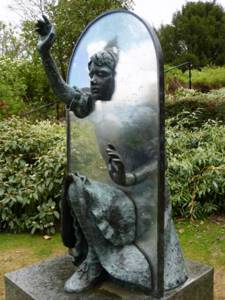
In a New Orleans park there is a sculpture made of metal words. What would it mean?
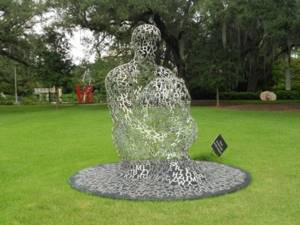
Alison Saar's artistic garden sculptures in Madison Square Park (New York) are part of the park's public art. Born from the roots.

You killed me Penny Hardy. This outdoor art sculpture is made from gears.
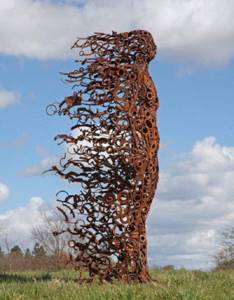
Inspired by the sheep of the Lakeland waters and crafted from rusty metal, these sheep sculptures can become a real feature in a garden. The sculpture may rust naturally and will change appearance over time. But this is the whole essence of this work. The sculptures are made to order and are accompanied by certificates from the author.
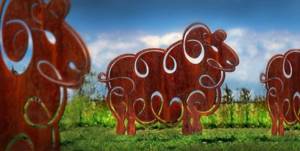
Louise Durham creates stained glass sculptures from wood and stained glass right on Shoreham Beach, between the sea and the river. Her creations are found in homes, large and small gardens, where the sun's rays can penetrate colored glass and reveal incredible colors. These sculptures can withstand different weather conditions.

The latest trend in garden sculptures is bottle trees.

15-foot, five-ton glass boat in the Bavarian Forest.
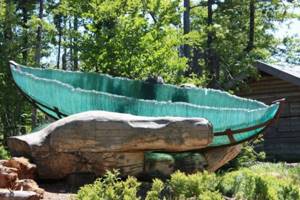
Charming spherical sculptures by David Harber.

Garden art statue made from roots.
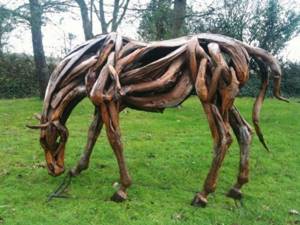
Michael Kane creates his garden sculptures from willow branches. "Fox with a Banjo" and "Fox with a Violin".
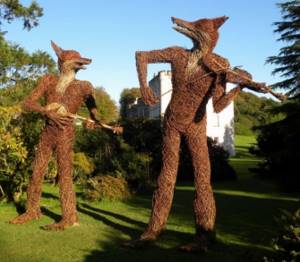
The full weight of sadness is filled in the sculpture of Celeste Roberge
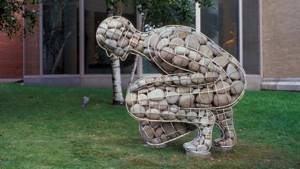
Robin White's stunning steel wire sculptures can be seen by following this link.

